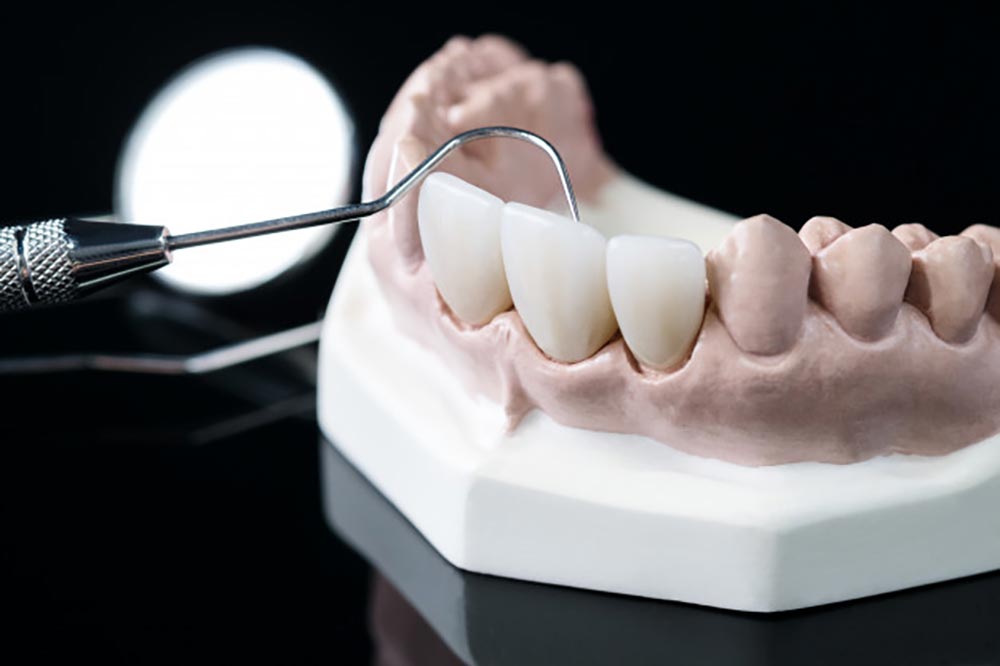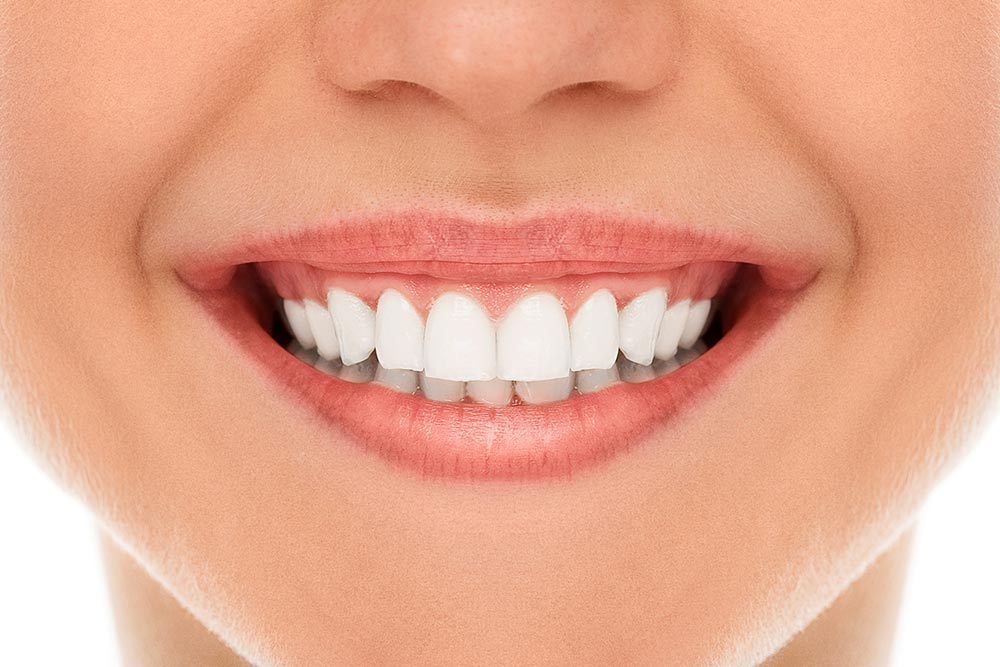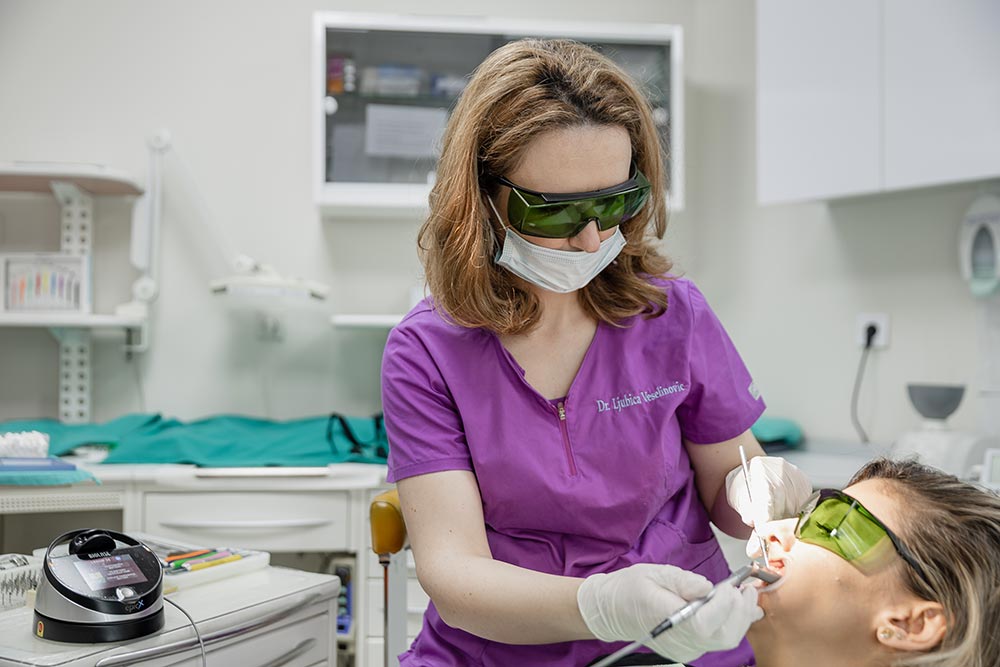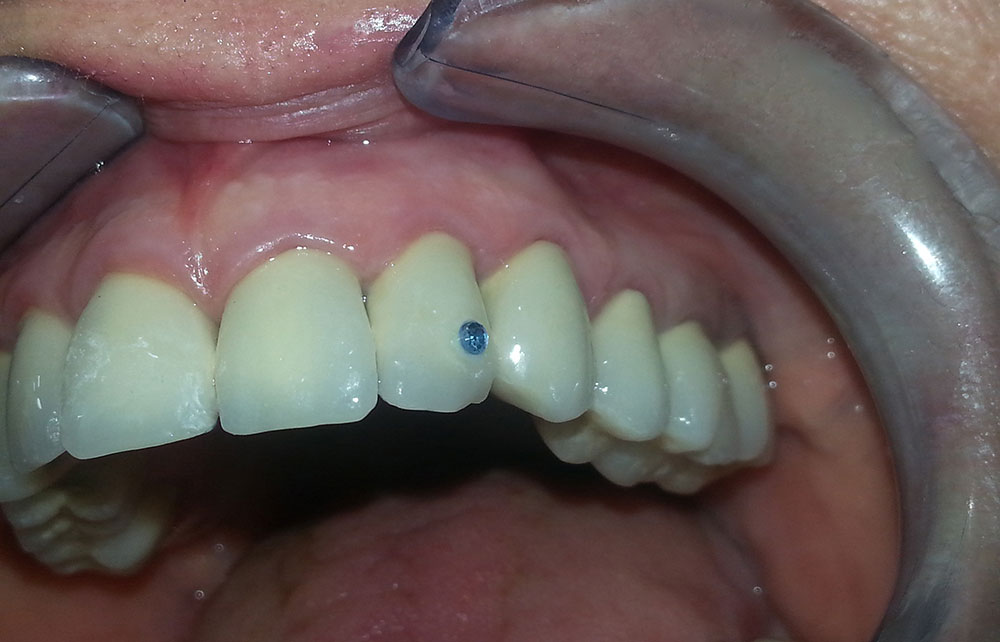Aesthetic dentistry
Aesthetic dentistry helps in solving various problems related to the beauty of the teeth.
Considering that the face is the primary representation of an individual in public, and a smile is the most beautiful gift that can be given when meeting someone, it is no wonder that aesthetic dentistry is so prevalent today.
Emphasizing high aesthetic standards in dentistry is motivated not only by the need for greater self-esteem but also for better social integration.
It is a multidisciplinary branch of dentistry because white teeth that are properly spaced as well as healthy gingiva often involve the cooperation of several dental disciplines:

Aesthetic dentistry - Treatments
In dental aesthetics, many means and methods are used to improve the appearance of teeth:
-
- dental fillings;
- facets (veneers / thin layers);
- dental crowns;
- teeth whitening;
- dental jewelry.
Aesthetic fillings –Dental Fillings
Dental fillings are fillings that are used to fill cavities in the tooth, i.e. the place where caries (defect) was located. A filling enables the restoration of a damaged tooth to its original state.
Caries is the most widespread dental disease, which is caused by the deposition of dental plaque bacteria.
In the beginning, this problem is manifested by the hypersensitivity of the teeth concerning external stimuli (hot, cold, sour, sweet).
In the later stages of development, the caries lesion can affect the pulp (dental nerve) and even lead to tooth loss. That is why it is very important to visit the dentist regularly so that caries are removed in time and complications are prevented.
After complete caries removal, it is necessary to fill the cavity, i.e. replace the lack of damaged tooth tissue. As a filling, amalgam, and composite (white) dental fillings are used.

Both of these types are reliable and long-lasting, and the main difference between them is in aesthetics – composite fillings faithfully reproduce the color of a natural tooth, perfectly matching it. This is the reason why they have primacy in modern dentistry and patients mostly choose them.
The differences between these two types of fillings concern their chemical composition. First of all, it refers to allergic reactions to the ingredients of the amalgam filling (mercury, copper, silver, and zinc). In addition, these metals cause the surrounding enamel to darken over time as the color of the amalgam filling penetrates the tooth enamel.
White, composite fillings are made from glass particles, synthetic resin, and bonding material. After their installation, there are no contraindications in terms of darkening of the surrounding tooth enamel.
Aesthetic dentistry and composite veneers
Composite materials are also used for making veneers. Facets or veneers are very thin layers, 0.3–1.3 mm thick, which are placed mainly on the front teeth by direct bonding. The advantage of veneers is that the teeth are minimally ground before gluing them: 0.6–0.8 mm.
Placing veneers can easily fix many aesthetic defects on the teeth: color and shape, various enamel damages, minor defects, and visible fillings. With their help, it is also possible to close the diastema (gap) between the front teeth.
When it comes to complications, there may be sensitivity to hot and cold when biting, at most two weeks after the intervention. In addition, over time the fillings can get a darker shade due to the consumption of coffee, carbonated drinks, and colored food.

Ceramic crowns
Dental crowns are prosthetic restorations that are used in case of dental fracture or teeth damaged by caries to such an extent that the filling cannot replace part of the tooth or strengthen it.
Crowns are also used for other aesthetic reasons: to cover up unevenness or tooth pigmentation.
According to the material of manufacture, there are several types of crowns
- metal crowns;
- metal-ceramic crowns;
- metal-free (zirconium-ceramic) crowns.
Metal crowns and aesthetic dentistry
Metal crowns are durable because they include alloys of different metals: gold, palladium, nickel, or chromium.
Metal-ceramic crowns
Metal-ceramic crowns are made by casting a metal base and adding the aesthetic part of the ceramic crown to it.
They are very durable, but over time, when the gums recede, a dark edge of the metal skeleton appears, which is not considered aesthetically acceptable.
There is also an aesthetic improvement of the metal-ceramic crown in the form of covering the metal edge with reinforced ceramic. However, these crowns require more precise laboratory production and are therefore more expensive than standard metal-ceramic crowns.
Metal-free (zirconium-ceramic) crowns
Zircon-ceramic crowns are placed on patients who do not accept anything other than the highest quality and superior aesthetics. These alumina (zirconia-glass) crowns are made by computer scanning technology and forming a zirconia base, which enables exceptional precision of the crown edge.
They have high mechanical resistance even though they are only 0.4 mm thick. This dimension of the zircon-ceramic crown ensures less grinding of the tooth surface, which is why they are placed exclusively in the front region. Its additional advantages are found in the white color of the base, which ensures a better imitation of the color of natural teeth.
With all of the above, we emphasize once again that when receding the gums, the mentioned dark metal edge is not visible as in the case of metal-ceramic crowns. Only highly specialized dental laboratories, compatible with the corresponding dental practice, are in chargeof the production of zircon-ceramic crowns.
Dr. Veselinović Dental Clinic is classified as a dental office that can fulfill the most challenging and demanding aesthetic requirements
Teeth whitening
Teeth whitening is one of the most popular treatments in modern dentistry to achieve a bright smile.Accordingly, we have to say that white teeth and an engaging smile are the first things you notice when meeting a person.
There are many causes of teeth discoloration: tobacco, coffee, red wine, carbonated drinks, and certain medications. Fortunately, some methods successfully remove dark deposits from the teeth.
Teeth whitening is a procedure that lightens the color of teeth by several shades. The result is not the same for all patients and depends on the individual reaction of the teeth to the treatment.
There are three methods of teeth whitening:
- dental office (laser) whitening;
- air-flow (sandblasting);
- home teeth whitening.
Laser teeth whitening
In-office or laser teeth whitening takes place in a dental office, under the guidance of professional staff.

On this occasion, gels of high concentration are used, and appropriate protection is placed on the gums. Professional teeth cleaning and whitening takes 30-60 minutes and is not recommended to be performed more than twice a year.
Zoom teeth whitening
Zoom lamp is a specially designed lamp that activates hydrogen peroxide gel, thereby enabling teeth whitening by up to eight shades without causing sensitive teeth in patients. The treatment takes only 45 minutes.
 Due to these advantages, Zoom lamp teeth whitening has become one of the most sought-after systems for professional teeth whitening.
Due to these advantages, Zoom lamp teeth whitening has become one of the most sought-after systems for professional teeth whitening.
Aesthetic dentistry and dental jewelry
Jewelry for teeth is certainly an important part of aesthetic dentistry. Dental jewelry is a great way to follow trends, highlight the beauty of teeth, and give your smile a personal touch.

Dental jewelry consists of:
- diamonds;
- gold;
- zircons.
Which option the patient will choose depends on his preferences and possibilities. Today, zircons are the most popular jewelry for teeth because they are more affordable and therefore more accessible to most people.
How is dental jewelry placed?
Dental jewelry is usually placed in the aesthetic zone – on the upper side of the front teeth, to make it more noticeable.
At the Dr. Veselinović Dental Clinic, the procedure for placing zircons and other dental jewelry is simple, short, and painless.
First, the surface of the tooth is cleaned and then treated with special preparations. Finally, the jewelry is attached to the tooth with special means. Accordingly, zircon is glued with dental filling glue, while precious and semi-precious stones are glued with a special one. Applying the jewelry takes between 5 to 10 minutes.
It is important to point out that decorating the teeth with jewelry is harmless and does not damage the structure of the teeth.
Zircon or precious stones remain on the tooth for several months if they are not subjected to great mechanical pressure when brushing and eating.
